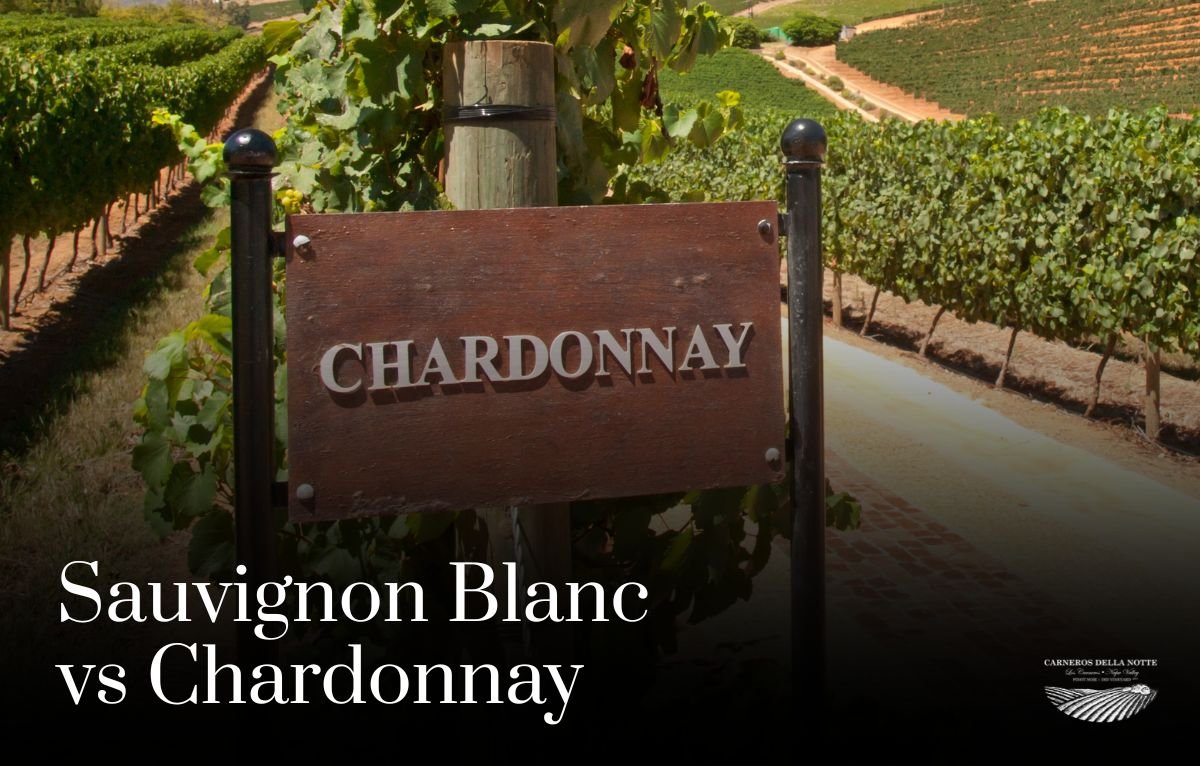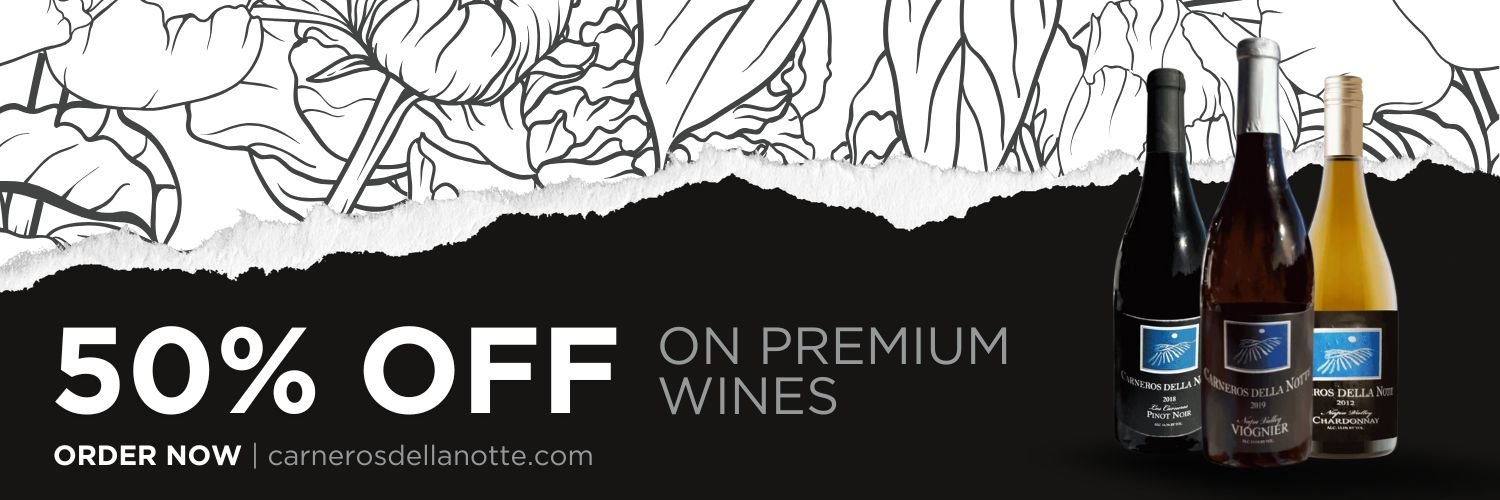If you are just beginning your journey into the world...
Read MoreThe debate of sauvignon blanc vs chardonnay is as lively as the wines themselves. Both are beloved around the world, yet their personalities on the palate are strikingly different.
One emphasizes freshness and vibrancy, while the other often leans toward depth and richness.
By exploring how these wines taste, feel, and express themselves in the glass, wine lovers can better understand what makes each unique and choose the one that suits their moment.
Crisp Edge of Sauvignon Blanc
Sauvignon Blanc is often described as the definition of refreshment. Known for its mouthwatering acidity, it creates a zesty, clean sensation on the tongue that feels invigorating.
The flavors can vary by region, but they usually lean toward citrus fruits like lime and grapefruit, balanced with notes of green apple, gooseberry, and sometimes fresh herbs.
The texture is equally important. Sauvignon Blanc typically sits on the lighter side of the spectrum, with a sharpness that leaves the mouth tingling.
This crisp profile makes it ideal for warm days, casual gatherings, and light meals. Its energy in the glass is what gives Sauvignon Blanc a reputation as a crowd-pleasing summer favorite.
Chardonnay’s Broader Personality
Chardonnay, on the other hand, is one of the most versatile grapes in the world, and its texture reflects that flexibility. In cooler climates or when aged in stainless steel, it can be lean and mineral-driven.
But when crafted with oak or malolactic fermentation, Chardonnay develops creaminess, weight, and flavors that range from vanilla and butter to ripe stone fruits.
The mouthfeel of Chardonnay is one of its defining features. It can be medium to full-bodied, coating the palate with richness that lingers.
This is why many describe Chardonnay as luxurious compared to Sauvignon Blanc’s lively snap. Its ability to stretch across styles gives it a broad audience, from those who enjoy crisp whites to those who prefer wines with depth and texture.
Flavor Differences at First Sip
When tasting sauvignon blanc vs chardonnay, the contrast is immediate. Sauvignon Blanc greets the palate with bright acidity and vibrant fruit, leaving a quick, refreshing finish.
Chardonnay unfolds more slowly, with layers that can include cream, toast, or tropical fruit depending on winemaking choices.
For someone new to wine, these differences help guide expectations. Sauvignon Blanc is often a first introduction to high-acid white wines, while Chardonnay offers an entry point to fuller, more complex styles.
Both can be delicious, but the experience they provide is distinct.
How Winemaking Impacts the Texture
Oak barrels, malolactic fermentation, and lees aging can dramatically alter how the wine feels and tastes.
A lightly oaked Chardonnay might still maintain crispness but with added roundness, while a heavily oaked version develops a creamy, almost dessert-like richness.
Sauvignon Blanc, by contrast, is usually made to highlight its natural zest. Stainless steel is the vessel of choice, which preserves the fruit and acidity. Some regions, however, experiment with oak or blending, producing Sauvignon Blancs with added weight.
These styles are less common but show how texture can evolve even with a grape known for sharpness.
Food Pairings by Texture
The way these wines interact with food is influenced directly by their flavor and body.
- Sauvignon Blanc: Best paired with dishes that benefit from acidity, such as goat cheese, green salads, oysters, or lemon-seasoned fish. Its lively edge brightens delicate or tangy foods.
- Chardonnay: A natural match for richer cuisine like roast chicken, creamy pasta, or buttery shellfish. Its weight and smooth finish complement dishes with similar texture and intensity.
These pairings are more than traditions; they are reflections of how acidity, body, and flavor in wine interact with food. Each sip feels like a continuation of the meal rather than a distraction from it.
Seasonal Appeal of Each Wine
Texture also defines the occasions where each varietal shines. Sauvignon Blanc is the classic choice for spring and summer, when refreshing flavors are most welcome.
Picnics, beach days, and garden lunches feel complete with a crisp Sauvignon Blanc in hand.
Chardonnay is often associated with autumn and winter. Its weight and warmth make it a comforting match for cooler weather, fireside dinners, and holiday gatherings.
That said, its diversity allows it to appear year-round, especially in lighter, unoaked styles that refresh like Sauvignon Blanc but still carry Chardonnay’s signature depth.
Regional Voices in Flavor and Texture
Regions leave their mark on both wines. Sauvignon Blanc from New Zealand bursts with tropical fruit and grassy notes, while French expressions from Sancerre are more mineral and restrained. California versions strike a balance, with bright citrus and subtle ripeness.
Chardonnay shows even more variety. Burgundy Chardonnays are often elegant, with minerality and subtle fruit. Napa Valley brings richness, with bold tropical notes and creamy textures.
Australian and South American versions may emphasize either freshness or oak, depending on the winemaker’s vision. These differences give wine drinkers endless choices when comparing sauvignon blanc vs chardonnay, making exploration part of the joy.
Why Their Contrast Matters
Sauvignon Blanc and Chardonnay represent two distinct styles that appeal to different moods, meals, and personalities.
One is sharp, refreshing, and linear; the other can be broad, creamy, and layered. Both offer depth, but they do so in completely different ways.
For collectors, the contrast means variety in the cellar. For casual drinkers, it provides options for every setting. And for winemakers, it allows creativity, from stainless steel Sauvignon Blancs to rich barrel-aged Chardonnays. Their enduring popularity proves that wine culture benefits from having both on the table.
Conclusion
When comparing sauvignon blanc vs chardonnay, it becomes clear that each offers a unique experience for the senses. Sauvignon Blanc delivers crispness, acidity, and lively refreshment, while Chardonnay offers body, creaminess, and layers of complexity.
At Carneros della Notte in Napa, we honor the character of each varietal by crafting wines that highlight balance and quality. For those who value flavor and texture as much as heritage, Carneros remains a destination where every glass tells its own story.
Latest blog & articles
Chardonnay for Beginners: A Friendly Guide to This Popular White Wine
Chardonnay wine stands as a pillar of sophistication in the...
Read MoreWhat Does Pinot Noir Taste Like?
If you’ve ever wondered what does Pinot Noir taste like,...
Read More





